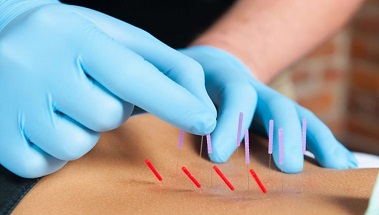Strong Shoulders: A Guide to Supportive and Athletic Excellence
In the realm of sports and athletics, the shoulder serves as a remarkable intersection of power and vulnerability, especially for overhead athletes. From baseball pitchers to swimmers and volleyball players, maintaining optimal shoulder health is crucial for peak performance and injury prevention. Shoulder conditions encompass a spectrum of injuries and disorders that affect the intricate anatomy of the shoulder joint, a marvel of mobility and strength. From athletes to desk workers, individuals of all lifestyles may encounter shoulder issues at some point. In this blog post, we delve into the intricate world of the dynamic stability of the shoulder, exploring the unique challenges faced by overhead athletes and the strategies to foster resilience.
SECTION 1: THE OVERHEAD ATHLETE'S DILEMMA
Overhead athletes constantly subject their shoulders to repetitive and forceful motions, exposing this complex joint to heightened demands. Whether it's the rapid overhead throw of a baseball or the powerful stroke of a swimmer, the shoulder's dynamic stability is paramount. However, this unique position also places athletes at an increased risk of shoulder injuries, including rotator cuff strains, labral tears, and instability issues.
SECTION 2: ANATOMY OF DYNAMIC STABILITY
The shoulder's dynamic stability is a delicate balance achieved by the interplay of muscles, ligaments, and the intricate design of the joint itself. The rotator cuff, a group of muscles and tendons, plays a pivotal role in stabilizing the shoulder during overhead movements. Ligaments provide additional support, and the glenoid labrum enhances joint congruency. Understanding this anatomy is essential for comprehending the challenges overhead athletes face.
SECTION 3: CHALLENGES FACED BY OVERHEAD ATHLETES
3.1 Repetitive Stress: Overhead athletes engage in repetitive, high-velocity movements, exposing their shoulders to cumulative stress. This stress can lead to microtrauma, inflammation, and eventual injuries.
3.2 Muscle Imbalances: As certain muscles are overused, imbalances may develop between the anterior and posterior shoulder muscles, impacting stability. Strengthening all components of the shoulder is vital for maintaining equilibrium.
3.3 Eccentric Loading: The eccentric phase of overhead movements, such as the deceleration phase in a pitch, subjects the shoulder to intense forces. Adequate strength and control during eccentric loading are critical for injury prevention.
SECTION 4: STRATEGIES FOR SHOULDER RESILIENCE
4.1 Comprehensive Strength Training: A well-rounded strength training program that targets all muscle groups surrounding the shoulder is essential. This includes the rotator cuff, deltoids, scapular stabilizers, and core muscles.
4.2 Neuromuscular Control: Developing neuromuscular control through targeted exercises enhances an athlete's ability to stabilize the shoulder joint during dynamic movements. Proprioceptive training is invaluable in this regard.
4.3 Flexibility and Mobility Work: Adequate shoulder flexibility and mobility are prerequisites for optimal performance. Regular stretching and mobility exercises can prevent stiffness and reduce the risk of impingement.
4.4 Periodization and Rest: Implementing proper periodization in training schedules and allowing for adequate rest are crucial. Overtraining can compromise shoulder health, leading to fatigue and increased susceptibility to injuries.
Conclusion:
In the world of overhead athletics, "Only The Strong Survive" is not just a mantra; it's a physiological reality. The dynamic stability of the shoulder demands a holistic approach that combines strength, control, flexibility, and strategic training. Overhead athletes, coaches, and healthcare professionals must collaborate to develop personalized programs that address the unique demands of each sport. By fostering resilience in the shoulder joint, athletes can not only optimize performance but also prolong their careers, ensuring that they remain strong and injury-free in the pursuit of athletic excellence. Suffering from shoulder conditions then call Progress Health Physiotherapy at 587-274-2440.










